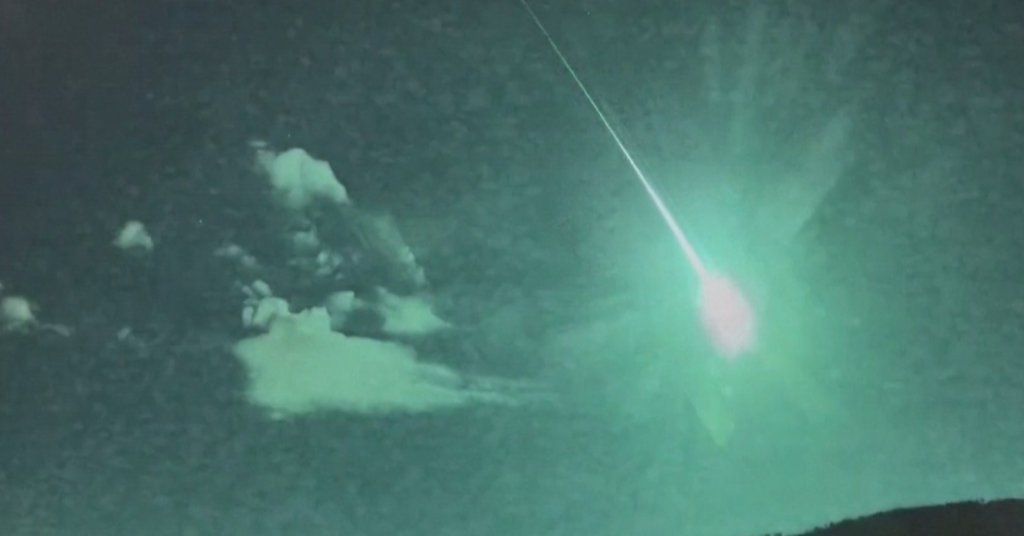Over the weekend, revelers in Spain and Portugal were treated to an unexpected show in the night sky. A fireball streaked across the sky, leaving a trail of incandescent colors in its wake. This was not a typical asteroid, but rather a fragment of a comet that met its end in Earth’s atmosphere. The European Space Agency confirmed that the object likely disintegrated 37 miles above the Atlantic Ocean, not posing a threat to the ground.
Comets are known to create shooting stars, as seen in various meteor showers throughout the year. When these objects enter Earth’s atmosphere, they burn up, releasing light and sometimes creating a shock wave. The fragment over the weekend was larger than most meteors seen during meteor showers, creating a more spectacular light show for observers. This event served as a reminder of Earth’s vulnerability to space rocks and the importance of planetary defense efforts.
The incident in Spain and Portugal highlighted the need for improved technology to detect potential threats from space. A meteor explosion in Russia in 2013, for example, caused widespread damage and injuries, demonstrating the potential risks of undetected objects entering Earth’s atmosphere. With new observatories on the horizon, such as the Vera C. Rubin Observatory in Chile, scientists hope to enhance their ability to spot asteroids and comets that could pose a danger to our planet.
The planetary defense community is focused on finding potentially hazardous asteroids and comets before they reach Earth. Detecting these objects early would allow for possible interventions to mitigate the threat they pose. The recent event over Portugal and Spain was not anticipated, underscoring the need for improved detection methods to protect against future impacts. The unpredictability of such events underscores the importance of ongoing research and monitoring of near-Earth objects.
The fragment over the weekend provided researchers with valuable data and insights into the behavior of comets entering Earth’s atmosphere. By studying these events, scientists can better understand the risks posed by asteroids and comets and develop strategies to protect our planet. The collaboration between international space agencies and experts in planetary defense is essential in safeguarding Earth from potential cosmic threats.
As we continue to explore the vast reaches of space, incidents like the one over Spain and Portugal serve as a reminder of Earth’s place in the solar system. The ongoing efforts to identify and track asteroids and comets are crucial for ensuring the safety and security of our planet. By investing in advanced technology and international cooperation, scientists are working towards a future where the threat of cosmic impacts is better understood and mitigated.


